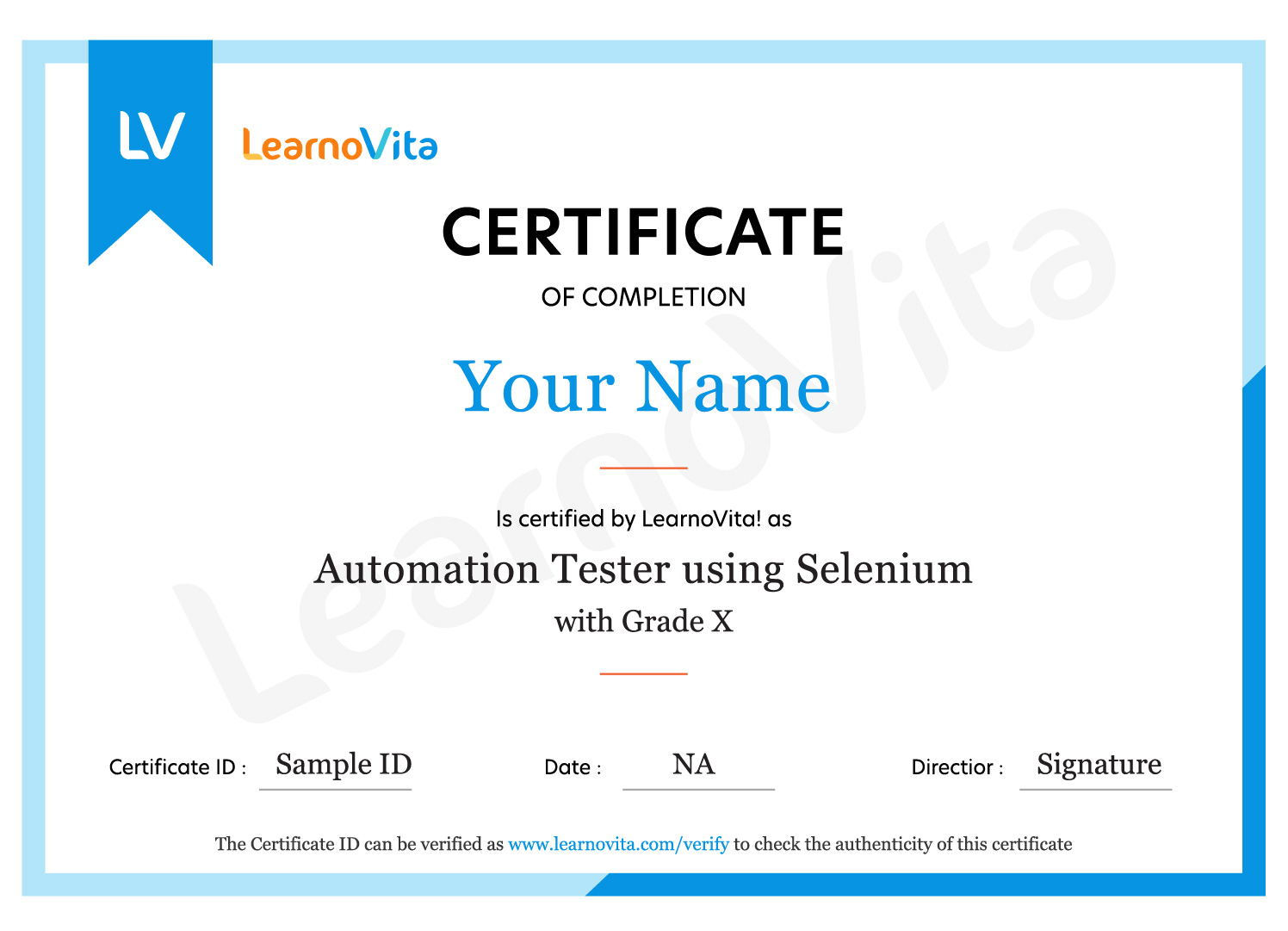MicroSoft Advanced Excel Training Objectives
- With Microsoft Excel being much obtainable on most computers at intervals today's trendy businesses, its data analysis, and data manipulation capabilities, combined with its relatively easy use, build it a powerful business intelligence tool that's currently obtainable to the lots.
- Microsoft's Excel may be a powerful knowledge organizing platform created to decrease litter and maximize the worth of information.
- Enrolling in a web Advanced Excel training not only opens multiple doors of moneymaking jobs however also allows the students of varied fields to affordably learn new skills from specialists.
- Recent studies have shown: eighty two of jobs need stand out skills and/or expertise with productivity code. On average, certified stand out skills will increase your earning potential.
In india there are more certified Microsoft Excel Institutes are available.
- Most of the individuals didn't understand additional about advanced Excel. Learning MS Excel skills can open doors for knowledge analysis, business analysis, MIS, etc.
- The career scope of advanced Excel is great within the job market. Big Data and data science area unit 2 important fields with engaging salaries.
- Nowadays within the ardent work setting, firms got to befits the cheap economical mechanism, managing data of companies, daily transactions, and so on.
- There's a requirement for qualified professionals in job markets.
- Students will add offices and MNC firms. Once finishing the Excel training you may get job opportunities in various sectors.
- Excel is typically used to classify data and perform financial analysis.
- It is used across all business functions and at companies from small to large. The main uses of Excel include Data entry.
- Advanced information of stand out suggests that possessing the flexibility to use spreadsheets, graphing, tables, calculations, and automation with efficiency to method giant quantities of knowledge relevant to business tasks.
- The means stand out is employed depends on the requirements and duties of specific departments or job roles.
- Just because you employ Word, Excel, PowerPoint, Outlook, or Access frequently does not imply that it's price obtaining certified.
- It would be price taking a course or 2 in employing a Microsoft workplace product. however there is in all probability very little reason to pay the additional time and cash to travel for the certification.
Request more informations
Phone (For Voice Call):
+91 89258 75257
WhatsApp (For Call & Chat):
+91 89258 75257
Top Companies Placement
The MS Excel Data Analytics Lead expedites market growth through analytics instructions such as pricing, stock optimization, assortment placement-related analytics, will be responsible to the business heads for frequent and convenient delivery of the marketing analysis and testimonials. They are often rewarded with substantial pay raises as shown below.
- Designation
-
Annual SalaryHiring Companies
Skills You Will Gain
- Core JSP and Servlets
- J2EE , Struts, Spring
- Hibernate, JDBC, Web Services
- Advanced JSP and Servlets
- EJB, JDO, JSF
- Android Development
- Servlets
Online Classroom Batches Preferred
No Interest Financing start at ₹ 5000 / month
Corporate Training
- Customized Learning
- Enterprise Grade Learning Management System (LMS)
- 24x7 Support
- Enterprise Grade Reporting
Java Certification Course Curriculam
Trainers Profile
Pre-requisites
Syllabus of Java Course in Porur Download syllabus
- Features of Java
- Simple
- Secure
- Portable
- Robust
- Multithreading
- Platform-Independent
- Distributed.
- Dynamic
- New Features of Java 8
- Introducing Java Environment
- Java Development Kit
- Java Platforms
- Java Virtual Machine
- Java API
- Java Programs
- Installing Java
- What about CLASSPATH?
- Java’s Reserve Words
- Starting a Java program
- Line 1—public class App
- Line 2—public static void main(String[] args)
- Line 3—System.out.println(“Hello from Java!”);
- Compiling Code 15
- Compiling Code: Using Command-Line Options
- Cross-Compilation Options
- Compiling Code: Checking for Deprecated Methods
- Running Code
- Running Code: Using Command-Line Options
- Commenting Your Code
- Importing Java Packages and Classes
- Finding Java Class with CLASSPATH
- Summary
- Variables
- Data Typing
- Arrays
- Strings
- What Data Types are Available?
- Creating Integer Literals
- Creating Floating-Point Literals
- Creating Boolean Literals
- Creating CharLearnoVitar Literals
- Creating String Literals
- Creating Binary Literals
- Using Underscores in Numeric Literals
- Declaring Integer Variables
- Declaring Floating-Point Variables
- Declaring CharLearnoVitar Variables
- Declaring Boolean Variables
- Initializing Variables Dynamically
- Conversion between Data Types
- Automatic Conversions
- Casting to New Data Types
- Declaring One-Dimensional
- Creating One-Dimensional Arrays
- Initializing One-Dimensional Arrays
- Declaring Multi-Dimensional Arrays
- Creating Multi-Dimensional Arrays
- Initializing Multi-Dimensional Arrays
- Creating Irregular Multi-Dimensional Arrays
- Getting an the Length of an Array
- Understanding General Form of Static Import
- Importing Static Members
- The String Class
- Getting String Length
- Concatenating Strings
- Getting CharLearnoVitars and Substrings
- Searching For and Replacing Strings
- Changing Case in Strings
- Checking for Empty String
- Formatting Numbers in Strings
- The StringBuffer Class
- Creating StringBuffers
- Getting and Setting StringBuffer Lengths and Capacities
- Setting CharLearnoVitars in String Buffers
- Appending and Inserting Using StringBuffers
- Deleting Text in StringBuffers
- Replacing Text in String Buffer
- Using the Wrapper Class
- Autoboxing and Unboxing of Primitive Types
- Learning the Fundamentals of Varargs Methods
- Overloading Varargs Methods
- Learning the Ambiguity in Varargs Methods
- Using Non-Reifiable Formal Parameters
- Operators
- Conditionals
- Loops
- Operator Precedence
- Incrementing and Decrementing (++ and --)
- Unary NOT (~ And !)
- Multiplication and Division (* and /)
- Modulus (%)
- Addition and Subtraction (+ and -)
- Shift Operators (>>, >>>, and <<)
- Relational Operators (>, >=, <, <=, ==, and !=)
- Bitwise and Bitwise Logical AND, XOR, and OR (&, ^, and /)
- Logical (&& and ||)
- The if-then-else Operator
- Assignment Operators (= and [operator]=)
- Using the Math
- Changes in the Math Class
- Class StrictMath
- Comparing Strings
- The if Statement
- The else Statement
- Nested if
- The if-else Ladders
- The switch Statement
- Using Strings in switch Statement
- The while Loop
- The do-while Loop
- The for Loop
- The for-each Loop
- Supporting for-each in Your Own Class
- A (Poor) Solution
- Significance of for-
- Nested Loops
- Using the break Statement
- Using the continue Statement
- Using the return Statement
- Summary
- The Control Overview of a Class
- Working with Objects
- Working with Methods
- Defining Default Methods
- Working with Constructors
- Using Default Constructor
- Using Parameterized Constructors
- Exploring Packages
- Studying the Types of Packages
- Importing Packages
- Using Access Specifiers
- Working with Streams API
- Stream API Overview
- Collection and Stream
- Commonly Used Functional Interfaces in Stream
- Java.util.Optional
- Aggregate Operations
- Working with Time API
- Understanding Encapsulation
- Understanding Abstraction
- Understanding Inheritance
- Understanding the final Keyword
- Preventing Inheritance
- Declaring Constant
- Preventing Method Overriding
- Implementing Interfaces
- Working with Lambda Expressions
- Method References
- Using Lambda Expressions
- Implementing Abstract Classes and Methods
- Difference between Abstract Classes and Interfaces
- Implementing Polymorphism
- Understanding the Static Polymorphism
- Understanding the Dynamic Polymorphism
- Summary
- Streams, Readers and Writers
- Essentials in NIO
- Buffers
- Channels
- Charsets and Selectors
- Enhancements in NIO with Java 8
- The Path Interface
- The Files Class
- The Paths Class
- The File Attribute Interfaces
- The FileSystem Class
- The FileSystems Class
- The FileStore Class
- Prospects of NIO
- Working with Streams
- The InputStream Class
- The OutputStream Class
- The ByteArrayInputStream Class
- The ByteArrayOutputStream Class
- The BufferedInputStream Class
- The BufferedOutputStream Class
- The FileInputStream Class
- The FileOutputStream Class
- Working with the Reader Class
- Working with the Writer Class
- Accepting Input from the Keyboard with the InputStreamReader Class
- Working with the OutputStreamWriter Class
- Working with Files
- Using the File Class
- Using the FileReader Class
- Using the FileWriter Class
- Working with the RandomAccessFile Class
- Working with CharLearnoVitar Arrays
- Using the CharArrayReader Class
- Using the CharArrayWriter Class
- Working with Buffers
- Using the BufferedReader Class
- Using the BufferedWriter Class
- Working with the PushbackReader Class
- Working with the PrintWriter Class
- Working with the StreamTokenizer Class
- Implementing the Serializable Interface
- Working with the Console Class
- Working with the Clipboard
- Working with the Printer
- Printing with the Formatter Class
- Using the System.out.printf() Method
- Using the String.format() Method
- Formatting Dates Using the String.format() Method
- Using the Java.util.Formatter Class
- Scanning Input with the Scanner class
- Summary
- Exception Handling Techniques
- Rethrowing Catched Exception with Improved Type Checking
- Built-in Exceptions
- User-Defined Exceptions
- Summary
- Using Threads in Java
- Life Cycle of a Thread
- Synchronization of Threads
- Multithreaded Custom Class Loader
- Getting the Main Thread
- Naming a Thread
- Pausing a Thread
- Creating a Thread with the Runnable Interface
- Creating a Thread with the Thread Class
- Creating Multiple Threads
- Joining Threads
- Checking if a Thread Is Alive
- Setting Thread Priority and Stopping Threads
- Synchronizing
- Communicating between Threads
- Suspending and Resuming Threads
- Creating Graphics Animation with Threads
- Eliminating Flicker in Graphics Animation Created Using Threads
- Suspending and Resuming Graphics Animation
- Using Double Buffering
- Simplifying Producer-Consumer with the Queue Interface
- Implementing Concurrent Programming
- Simplifying Servers Using the Concurrency Utilities
- Knowing Various Concurrency Utilities
- Learning about the Java.util.concurrent Package
- Learning about the Java.util.concurrent.locks Package
- Learning about the Java.util.concurrent.atomic Package
- Summary
- The Collection Interfaces
- The Collection Classes
- The Map Interfaces
- The Map Classes
- Collections Framework Enhancements in Java SE 8
- Using the Collection Interface
- The Queue Interface
- The List Interface
- The Set Interface
- The SortedSet Interface
- Using the Collection Classes
- Using the Comparator Interface
- Using the Iterator Interface
- Using the ListIterator Interface
- Using the AbstractMap Class
- Using the HashMap Class
- Using the TreeMap Class
- Using the Arrays Class
- Learning the Fundamentals of Enumerations
- The Legacy Classes and Interfaces
- Using the Aggregate Operations
- Using the Java.util.function Package
- Summary
- Packages and Interfaces
- JAR Files
- The Java API Package
- The Java.lang Package
- Basics of Annotation
- Other Built-In Annotations
- Creating a Package
- Creating Packages that have Subpackages
- Creating an Interface
- Implementing an Interface
- Extending an Interface
- Using Interfaces for Callbacks
- Performing Operations on a JAR File
- Marker Annotations
- Single Member Annotations
- Summary
- What is Java Bean?
- Advantages of Java Bean
- Introspection
- Persistence
- Customizers
- Understanding Java Beans
- Designing Programs Using Java Beans
- Creating Applets that Use Java Beans
- Creating a Java Bean
- Creating a Bean Manifest File
- Creating a Bean JAR File
- Creating a New Bean
- Adding Controls to Beans
- Giving a Bean Properties
- Design Patterns for Properties
- Using Simple Properties
- Designing Patterns for Events
- Learning Methods and Design Patterns
- Creating Bound Properties
- Giving a Bean Methods
- Giving a Bean an Icon
- Creating a BeanInfo Class
- Setting Bound and Constrained Properties
- Implementing Persistence
- Using the Java Beans API
- Learning the Basics of an Event
- Using the Java Beans Conventions
- Using the Remote Notification and Distributed Notification
- Using Beans with JSP
- Summary
- Basics of Networking
- Sockets in Java
- Client-Server Networking
- Proxy Servers
- Internet Addressing
- Domain Name Service
- Inet4Addresses and Inet6Addresses
- The URL Class
- The URI Class
- URI Syntax and Components
- TCP/IP and Datagram
- Blackboard Assignment Retrieval Transaction
- Understanding Networking Interfaces and Classes in the Java.net Package
- Understanding the InetAddresses
- Caching InetAddress
- Creating and Using Sockets
- Creating TCP Clients and Servers
- Understanding the Whois Example
- Submitting an HTML Form from a Java Program
- Handling URL
- Using the URLConnection Objects
- Working with Datagrams
- Datagrams Server and Client
- Working with BART
- Learning about the Java.security Package
- Summary
- Introducing Events
- Introducing Event Handling
- Working with the Types of Servlet Events
- Developing the onlineshop Web Application
- Introducing Wrappers
- Working with Wrappers
- Summary
- Introducing JSP Technology
- Listing Advantages of JSP over Java Servlet
- Exploring the Architecture of a JSP Page
- Describing the Life Cycle of a JSP Page
- Working with JSP Basic Tags and Implicit Objects
- Working with Action Tags in JSP
- Exploring EL
- Using Custom Tag Library with EL Functions
- Exploring the Need of Filters
- Exploring the Working of Filters
- Exploring Filter API
- Configuring a Filter
- Creating a Web Application Using Filters
- Using Initializing Parameter in Filters
- Manipulating Responses
- Discussing Issues in Using Threads with Filters
- Summary
- Describing the Java EE Application Architecture
- Introducing a Design Pattern
- Discussing the Role of Design Patterns
- Exploring Types of Patterns
- Summary
- Section A: Exploring SOA and Java Web Services
- Overview of SOA
- Describing the SOA Environment
- Overview of JWS
- Role of WSDL, SOAP and Java/XML Mapping in SOA
- Section B: Understanding Web Service Specifications to Implement SOA
- Exploring the JAX-WS 2.2 Specification
- Exploring the JAXB 2.2 Specification
- Exploring the WSEE 1.3 Specification
- Exploring the WS-Metadata 2.2 Specification
- Describing the SAAJ 1.3 Specification
- Working with SAAJ and DOM APIs
- Describing the JAXR Specification
- JAXR Architecture
- Exploring the StAX 1.0 Specification
- Exploring the WebSocket 1.0 Specification
- Describing the JAX-RS 2.0 Specification
- Exploring the JASON-P 1.0 Specification
- Section C: Using the Web Service Specifications
- Using the JAX-WS 2.2 Specification
- Using the JAXB 2.2 Specification
- Using the WSEE and WS-Metadata Specifications
- Implementing the SAAJ Specification
- Implementing the JAXR Specification
- Implementing the StAX Specification
- Introduction to Hibernate
- Hibernate CRUD Operation
- Hibernate Queries and Relationships
- Mapping Relationship with Hibernate
- Introduction to Spring
- Dependency Injection, SpringBean Lifecycle, Wiring and Scope
- Introduction to Spring AOP (Aspect-Oriented Programming)
- Configuring AOP in Java Application using AspectJ Approach
- Spring JDBC Implementation in an Application
- Spring Hibernate Template
- Spring JDBC Transaction Management
- Spring MVC Architecture, Components, and Framework
- Spring MVC Program
Request more informations
Phone (For Voice Call):
+91 89258 75257
WhatsApp (For Call & Chat):
+91 89258 75257
Industry Projects
Career Support
Our Hiring Partner
Request more informations
Phone (For Voice Call):
+91 89258 75257
WhatsApp (For Call & Chat):
+91 89258 75257
Exam & Certification
At LearnoVita, You Can Enroll in Either the instructor-led Java Online Course, Classroom Training or Online Self-Paced Training.
Java Online Training / Class Room:
- Participate and Complete One batch of Java Training Course
- Successful completion and evaluation of any one of the given projects
Java Online Self-learning:
- Complete 85% of the Java Certification Training
- Successful completion and evaluation of any one of the given projects
These are the Four Different Kinds of Certification levels that was Structured under the Oracle’s Java Certification Path.
- Oracle Certified Associate (OCA)
- Oracle Certified Professional (OCP)
- Oracle Certified Expert (OCE)
- Oracle Certified Master (OCM)
- Learn About the Certification Paths.
- Write Code Daily This will help you develop Coding Reading and Writing ability.
- Refer and Read Recommended Books Depending on Which Exam you are Going to Take up.
- Join LernoVita Java Certification Training in Porur That Gives you a High Chance to interact with your Subject Expert Instructors and fellow Aspirants Preparing for Certifications.
- Solve Sample Tests that would help you to Increase the Speed needed for attempting the exam and also helps for Agile Thinking.

Our Student Successful Story
Java Course FAQ's
- LearnoVita will assist the job seekers to Seek, Connect & Succeed and delight the employers with the perfect candidates.
- On Successfully Completing a Career Course with LearnoVita, you Could be Eligible for Job Placement Assistance.
- 100% Placement Assistance* - We have strong relationship with over 650+ Top MNCs, When a student completes his/ her course successfully, LearnoVita Placement Cell helps him/ her interview with Major Companies like Oracle, HP, Wipro, Accenture, Google, IBM, Tech Mahindra, Amazon, CTS, TCS, HCL, Infosys, MindTree and MPhasis etc...
- LearnoVita is the Legend in offering placement to the students. Please visit our Placed Students's List on our website.
- More than 5400+ students placed in last year in India & Globally.
- LearnoVita Conducts development sessions including mock interviews, presentation skills to prepare students to face a challenging interview situation with ease.
- 85% percent placement record
- Our Placement Cell support you till you get placed in better MNC
- Please Visit Your Student's Portal | Here FREE Lifetime Online Student Portal help you to access the Job Openings, Study Materials, Videos, Recorded Section & Top MNC interview Questions
- LearnoVita Certification is Accredited by all major Global Companies around the World.
- LearnoVita is the unique Authorized Oracle Partner, Authorized Microsoft Partner, Authorized Pearson Vue Exam Center, Authorized PSI Exam Center, Authorized Partner Of AWS.
- Also, LearnoVita Technical Experts Help's People Who Want to Clear the National Authorized Certificate in Specialized IT Domain.
- LearnoVita is offering you the most updated, relevant, and high-value real-world projects as part of the training program.
- All training comes with multiple projects that thoroughly test your skills, learning, and practical knowledge, making you completely industry-ready.
- You will work on highly exciting projects in the domains of high technology, ecommerce, marketing, sales, networking, banking, insurance, etc.
- After completing the projects successfully, your skills will be equal to 6 months of rigorous industry experience.
- We will reschedule the classes as per your convenience within the stipulated course duration with all such possibilities.
- View the class presentation and recordings that are available for online viewing.
- You can attend the missed session, in any other live batch.

- Build a Powerful Resume for Career Success
- Get Trainer Tips to Clear Interviews
- Practice with Experts: Mock Interviews for Success
- Crack Interviews & Land Your Dream Job
Get Our App Now!

















 Regular 1:1 Mentorship From Industry Experts
Regular 1:1 Mentorship From Industry Experts




